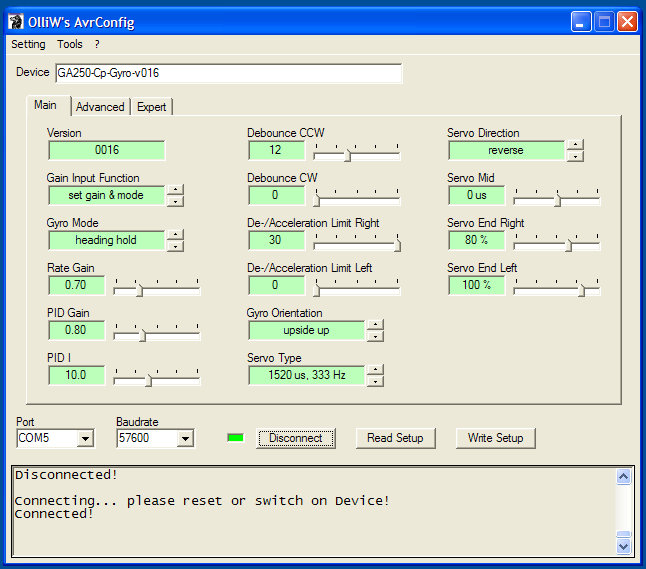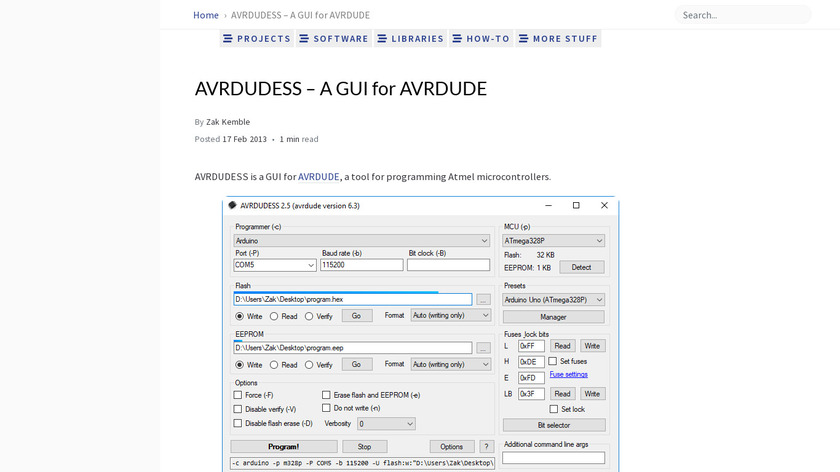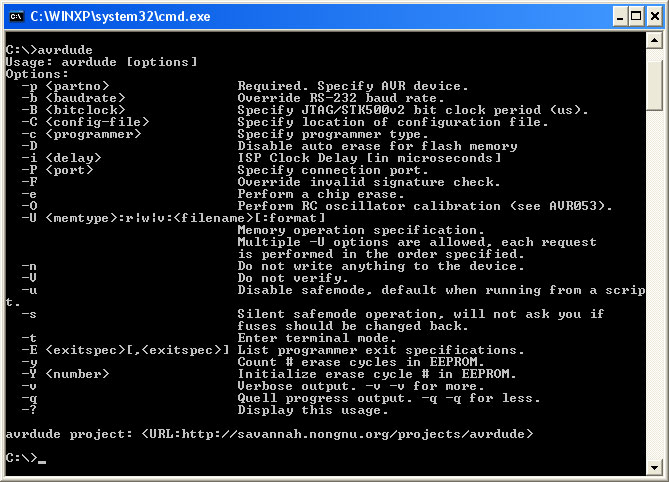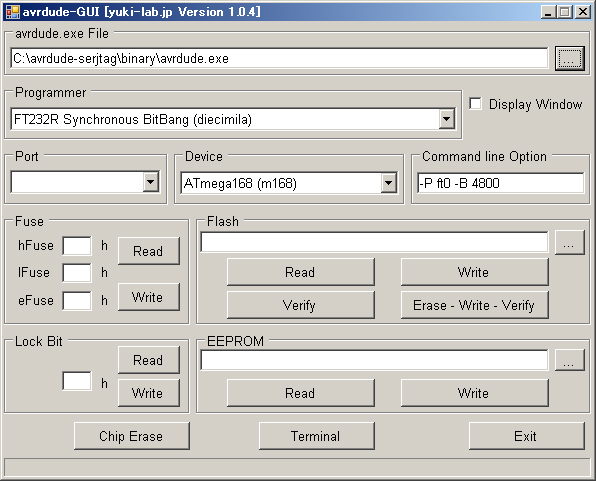

This build fixes bug Buffer overflow in usbtiny. This build adds support for Microsoft Visual Studio. This build contains a patches library of libftdi. However, libftdi1 cannot use the D2XX interface, so it will not work with the plug-and-play drivers. Similar to libusb, the libftdi1 library does not play nice on Windows: On Windows, FTDI downloda load the manufacturer supplied driver via plug-and-play. Windows provides a mechanism to automatically load the built-in WinUSB driver without providing a driver installation package INF eownload. This patch has a number of advantages, such as. The libwinusb implementation supports both the winusb. Release Windows avrdude - avrdude - OSDN.


GitHub - mariusgreuel/avrdude: AVRDUDE for Windows 10.

The file is located in C:\WinAVR-20100110\bin by default in Windows. The workaround is to find the AVRDUDE configuration file, nf, and increase the chip erase delay for the m324p/m644p/m1284p to 55000. This means that when you try to program, the erase operation will take longer than AVRDUDE expects and AVRDUDE will interpret this as an error. Note for Orangutan SVP and X2 users: AVRDUDE has incorrect chip erase delay settings for the ATmega324P, ATmega644P, ATmega1284P. Please see the AVRDUDE documentation for more detailed information. In this example we are using -U to write test.hex to flash.


 0 kommentar(er)
0 kommentar(er)
